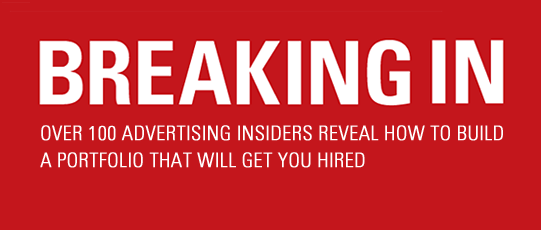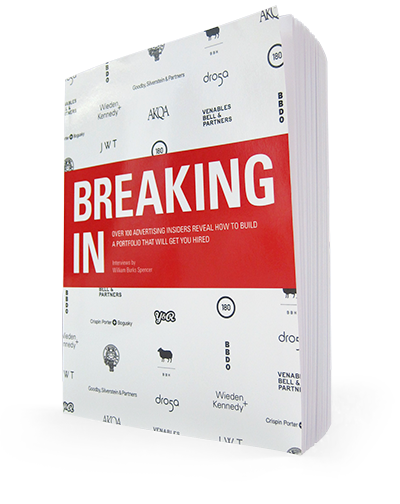In case you missed it, check out some great work from Alan Buchanan.
AB: …But when you’re making a book, you should think very carefully about how those long-copy ads play off the rest of your work and how they influence the pacing of the book. I just saw a great book today and the last ad campaign was just a simple visual solution. By then I had already looked through a variety of ads, some that demanded more attention than others, and I was ready for something quick and easy. That was nice; he paced it really well.
WS: Do you like to see things that aren’t ads?
AB: Definitely, yeah. I think Kevin [Proudfoot, former ECD of W+K NY] once hired a writer here and he had great work, but the most interesting parts of the book, he told me, were the scans from a sketchbook of his which were just doodles and miscellaneous ideas and random thoughts. One of the thoughts was the concept for branding Republican peanut butter.
And if you’re an art director, bringing examples of design that you’ve done shows your breadth there; or if you dabbled in photography. Or, there’s a guy who came in today, and he was in a band, and just the fact that he was in a band at one point, and he played in Athens, Georgia, and hung out with Mike Mills from REM, gave him an interesting story, other than just being a guy whose focus was solely on advertising. So it’s sort of nice to see that other stuff. You have to have advertising in there, obviously, but it’s the other stuff that sets you apart from everyone else.
WS: Do you think you can get a job with just sketches, or do you think the work has to be finished and comped up?
AB: For an art director, no. But for a writer, I think maybe you could.
WS: Do you have any tips or guidance that you would give someone who’s just starting to put together a book or trying to get a job?
AB: I’m thinking back on what I did when I got a job, and I think if there was anything in the way I did my book that helped me out, it was that it didn’t look like other books that I had seen. I didn’t design it to be different just to be different; the design came out of the specific demands of the work. I had a campaign where the copy was organically placed within the environment of the ad—the headlines were on a newspaper someone was holding—and the ads looked better and were more legible when printed at full size. Also, when you looked at the ads together as a campaign, their colors complemented each other and made the campaign look more cohesive. So instead of simply placing one ad on each page, to maximize their size, or putting them all on one page, to show how they worked together, I did both. I designed a book where each page folded out into an extra-large accordion page so you could see the ads together in their entirety, yet the book wasn’t obscenely cumbersome either. The design of the book was unique and stood out, but it was designed in a way that served the demands of the campaign.
But in general, the thing I like to see in a student book is smart, maybe dense, but still elegantly simple ads. Ads where it doesn’t seem like you have to wade through so much information to get the point.
WS: It needs to be quicker.
AB: Yeah, I saw another book once that was—and these are things not to do, I guess—the whole book was just sarcastic, frat humor. Every single ad was the same thing. So, it goes without saying, but it’s a good idea to try to get a variety of voices within the ads. Like something sort of serious and smart, and something that’s just sort of pleasurably ridiculous. Variety of tone and variety of subject matter.


Comments are closed.